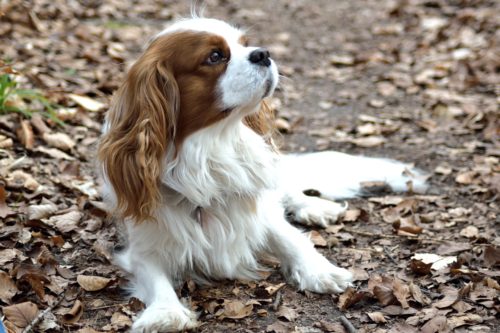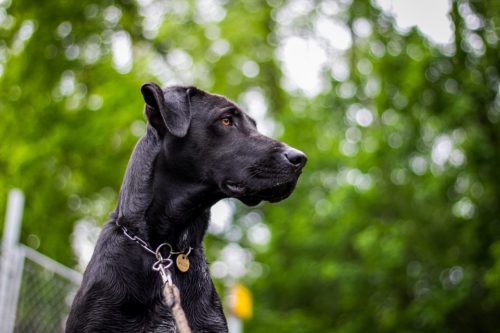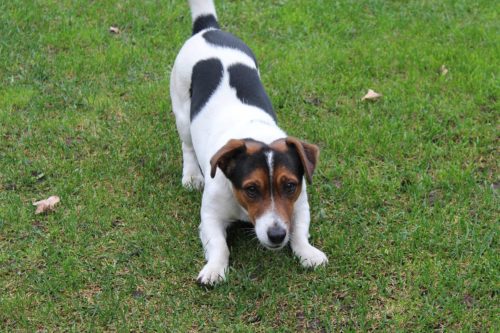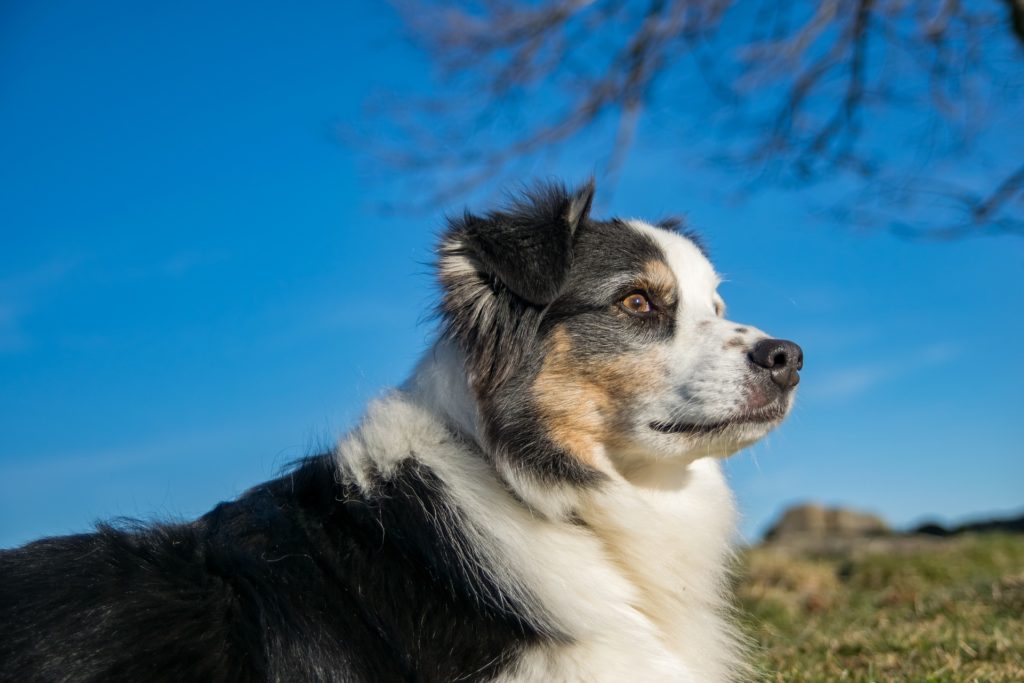It’s happened to everyone. Your adorable and lovable furry friend is enjoying moments with you when suddenly, he’s now scooting his butt across the floor. It may seem like just a harmless and awkward moment, but it actually might be more than just an itch. While they seem to never stop scooting and you just keep asking yourself “Why are they doing this?” it’s important to know whether it’s a harmless scoot or not.
What seems to be a “typical funny dog thing” could be a symptom of something more serious. Next time your dog does this, be aware of the possible causes of butt scooting. Unfortunately, this is something that affects all dog breeds and is not limited to anyone one breed, so it’s even more of a reason to make sure your dog is healthy and not suffering from any underlying issues. Most of the time it is just an itch, but ultimately, it depends on the context and frequency of the butt scooting.
Why Is Your Dog Scooting?
There are many reasons as to why your dog is scooting his butt across the floor. When dogs scoot their butt across the floor, it means they are experiencing some discomfort. Just how uncomfortable and serious that is, though, will depend on how often they are scooting their butt and in what context.
The discomfort comes from the dog’s anal glands, something that most people don’t even know exist, much less want to know about. Various reasons for dog scooting could include problems with anal sac ducts, tumors, allergies, yeast infections, worms, matted hair, anxiety, or hopefully, just a harmful itch or a little self-cleaning after doing their business.
Either way, it’s important to know why your dog is scooting his butt in order to be prepared and make sure he isn’t suffering from pain long-term or consistently.
Anal Sac Ducts

The most common reason for scooting behavior has to do with a dog’s anal sac ducts. A dog’s anal sac ducts are located on each side of the dog’s anus. Whenever dogs have a bowel movement, the sacs are emptied out. But if they’re not emptied out, problems like inflammation, clogs, and impacts can ensue.
The only way to relieve the pain and inflammation? Scooting on the floor. Hence why dogs are often seen scooting around. They are simply trying to relieve the pain of the inflammation.
Anal sac ducts are extremely dangerous when left untreated. Impacted and inflamed anal sacs can burst open and cause more excruciating pain, leading to more scooting. If you notice that your dog’s scooting trail leaves behind discoloration or a smell and the behavior continues for a few days, it’s time to go to the vet.
If your dog keeps scooting and you suspect that something is wrong, you want to investigate your dog to make sure nothing extremely abnormal is going on. Start by lifting up your dog’s tail and checking for any sort of irritation. Since it is something dog owners aren’t too familiar or comfortable with, many also prefer to take their dogs to the vet to get their glands checked out.
The plus side of this is that vets can check more in-depth for any impact on anal glands or even tumors. In very rare instances, glands have to be surgically removed, but staying on top of your dog’s health can prevent this from having to happen.
Tumors
Another possible explanation for scooting is tumors in dogs, specifically, anal gland adenocarcinoma. Although the term seems frightening at first, tumors refer to any sort of general abnormal growth or tissue. It’s crucial to take your dog to the vet to determine whether any issues are benign or malignant. Because tumors are hard to see most of the time, you might not notice unless you’re grooming your dog or checking the anal glands if your dog is scooting around too much.
Anal gland adenocarcinoma easily spreads to the lymph nodes and throughout the rest of the body. Because of this, it’s vital to make sure that your dog’s scooting behavior isn’t tumor- or anal gland- related. If you notice any bleeding, bruising, pus, or swelling when you lift your dog’s tail, then it’s a sign that something serious is happening and you should immediately go to the vet.
Extremely painful and fast spreading, these kinds of tumors can be treated with antibiotics or anti-inflammatories if detected early, but if you’re late, surgery may be required. Luckily, this form of tumor is extremely rare, but unfortunately, when they do occur, they are extremely aggressive. So next time you see your dog scooting, stay on the safe side and makes sure it isn’t a malignant problem such as a tumor. When in doubt, go to the vet and have them check it out.
Allergies
Allergies are an extremely common problem that many dogs face, no matter what breed they are. From rashes to irritations, allergies in dogs result in extremely dry, dull, and itchy fur that makes dogs feel very uncomfortable. Allergies are an extremely common cause for dog scooting, especially seasonal allergies, as well as fleabite and insect bite allergic reactions. Some of your dog’s skin rashes and allergic reactions could be near their anus, which is why they are scooting their butt across the floor.
The only way dogs can relieve this itch is by scooting around the floor, so it’s important that you notice your dog’s behavior and understand the problem as soon as possible so that the dog’s discomfort can be alleviated.
Fortunately, allergies are not as serious of a problem as others and most of the time, aren’t a result of long-term health issues. Allergies and dog rashes can be easily spotted and treated once you notice them. A few rashes need to be treated with medication, but most of them can be treated at home with remedies such as warm oatmeal baths and dietary changes.
If the rash is bad and you notice that remedies aren’t working, take your dog to the vet and get the proper medication and figure out what exactly is going on. The faster you find out the cause of your dog’s allergies and rashes, the sooner your dog will stop scooting his butt across to the floor.
Yeast Infections

Yeast infections can also cause your dog to scoot his butt on the floor. This condition can cause itching and burning near their perivulvar area. Because the symptoms for infected anal glands and yeast infection are extremely similar, it’s important to have your vet check both just in case it actually ends up being a yeast infection.
Because of the burning and itching, dogs feel the need to scoot their butt across the floor for comfort. Bladder or urinary tract infections (UTIs) in dogs can also cause scooting behaviors. Yeast infections may also result when your dog has other infections or rashes. Hormonal disorders, contact allergies, antibiotics, chemotherapy drugs, and external parasites sometimes directly cause yeast infections as well, due to the imbalance in usual yeast production. This is when infections start to form and turn into yeast infections.
Worms
There are many different kinds of worms that all cause similar scooting symptoms in dogs. From roundworms to hookworms to whipworms to tapeworms, all of them hook onto the dog’s intestines and cause discomfort. But the tapeworm specifically is flat and therefore can break off and stick to the anus of your dog. These broken pieces are visible to the eye and you can tell it’s a tapeworm if you notice that they look similar to grains of rice or white specks.
There are many symptoms that dogs with worms suffer, such as bloated bellies, regular vomiting, diarrhea, and scratching and rubbing against the floor, especially their butts. If you notice any of these symptoms accompanied with your dog’s scooting behaviors, take your dog to the vet and see what kind of treatment can be done. Typically vets will test a stool sample and then determine which medication is right for the worm that your furry friend has.
Matted Hair
If you have a longhaired dog, this issue will concern you more. Grooming is an important part of keeping your dog healthy, so if there are any problems with matted hair around the butt, it’s going to cause discomfort and itchiness. Matted hair also catches loose stool more easily, which will accumulate and cause even more itchiness. Cleanliness and constant grooming can prevent this from happening and it’s an easy and necessary way to make sure your dog isn’t getting any matted hair.
Behavioral & Neurological Causes
Sometimes the cause for dog scooting isn’t physical at all – instead, it’s neurological or behavioral. When dogs develop behavioral or neurological problems, they may start excessively grooming, rubbing, and scooting across the floor. Fear and anxiety in dogs can also cause numbness and tingling that may result in scooting behaviors.
Obese dogs also have a higher chance of scooting as well, due to health issues that come with being overweight. In rare cases, dogs that have gone through spinal surgeries may have also developed abnormal sensations that caused nerve damage and resulted in behavior patterns, like scooting.
How Much Scooting Is Too Much Scooting?

As you can see, there are multiple reasons as to why your dog is scooting his butt across the floor. So how much is too much? And when is scooting considered abnormal? There is no set number, but if you notice that your dog scoots more than a couple times a day for a few days, or if they’ve been consistently scooting for 48 hours or more, it’s definitely time to have them checked out by a vet.
Just An Itch
Sometimes, it really is just an itch. Like humans, dogs sometimes have a little rear end itch. Dogs are always running around doing dog things and scooting their butt across the floor is another one of those things. So don’t jump to conclusions if you see your dog scoot just once. If there are no other symptoms or abnormalities, chances are, your dog is just being a dog. And with an itch, it’s nothing a little scoot can’t fix.
How to Treat Dog Scooting
It’s one thing to notice that your dog is scooting his butt across the brand new living room rug every once in awhile and another thing to see your dog constantly scooting multiple times a day for days on end. It might seem like just a harmless butt scoot, but it could be something more severe if it’s a persistent scoot.
When in doubt, have the vet check it out. It’s better to be safe when it comes to these issues than for it to be too late or difficult to treat. You want your furry friends to be as comfortable as possible, and sometimes that means making sure that their tush is healthy, clean, pain-free, and most important, itch-free.




